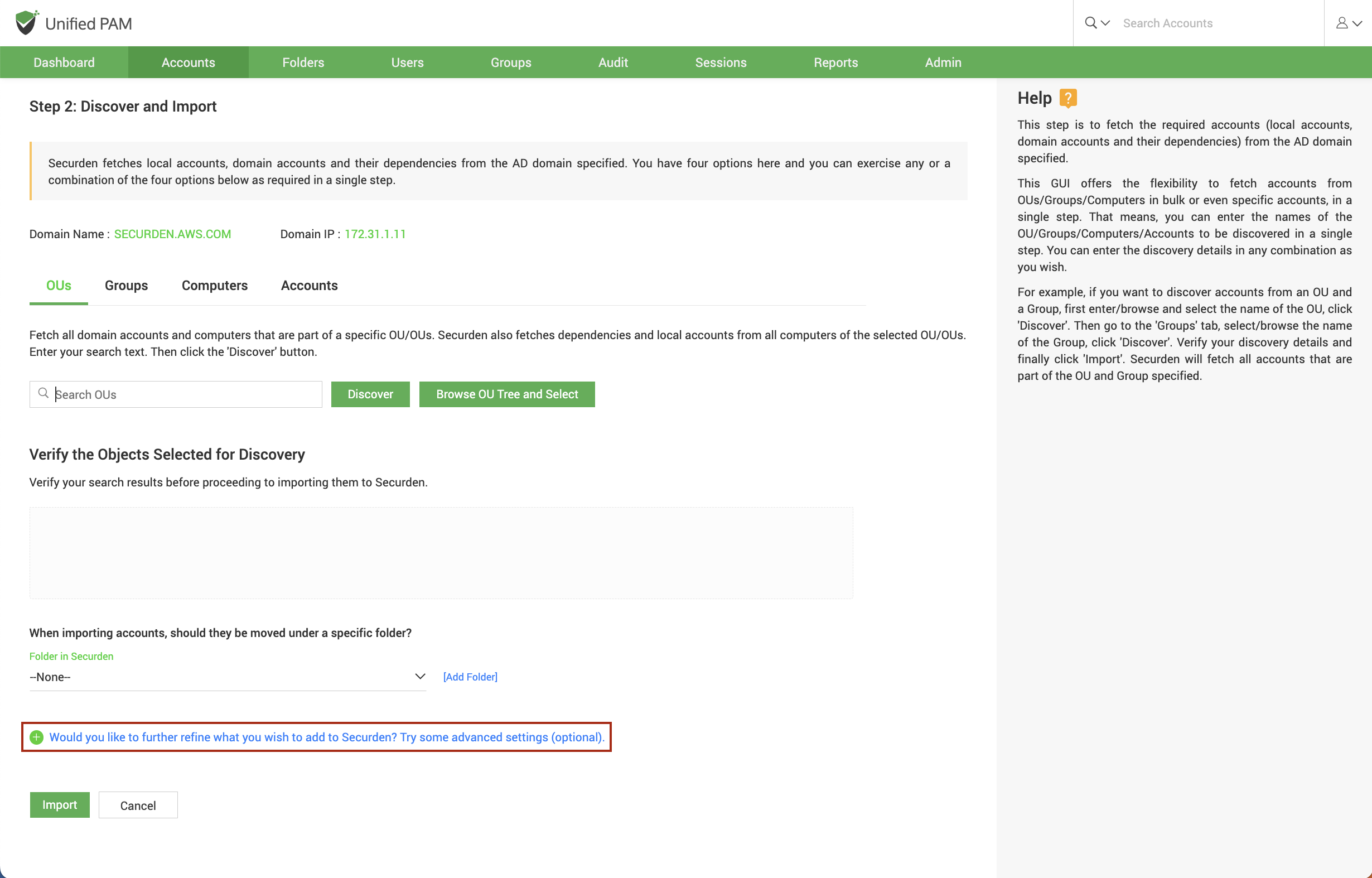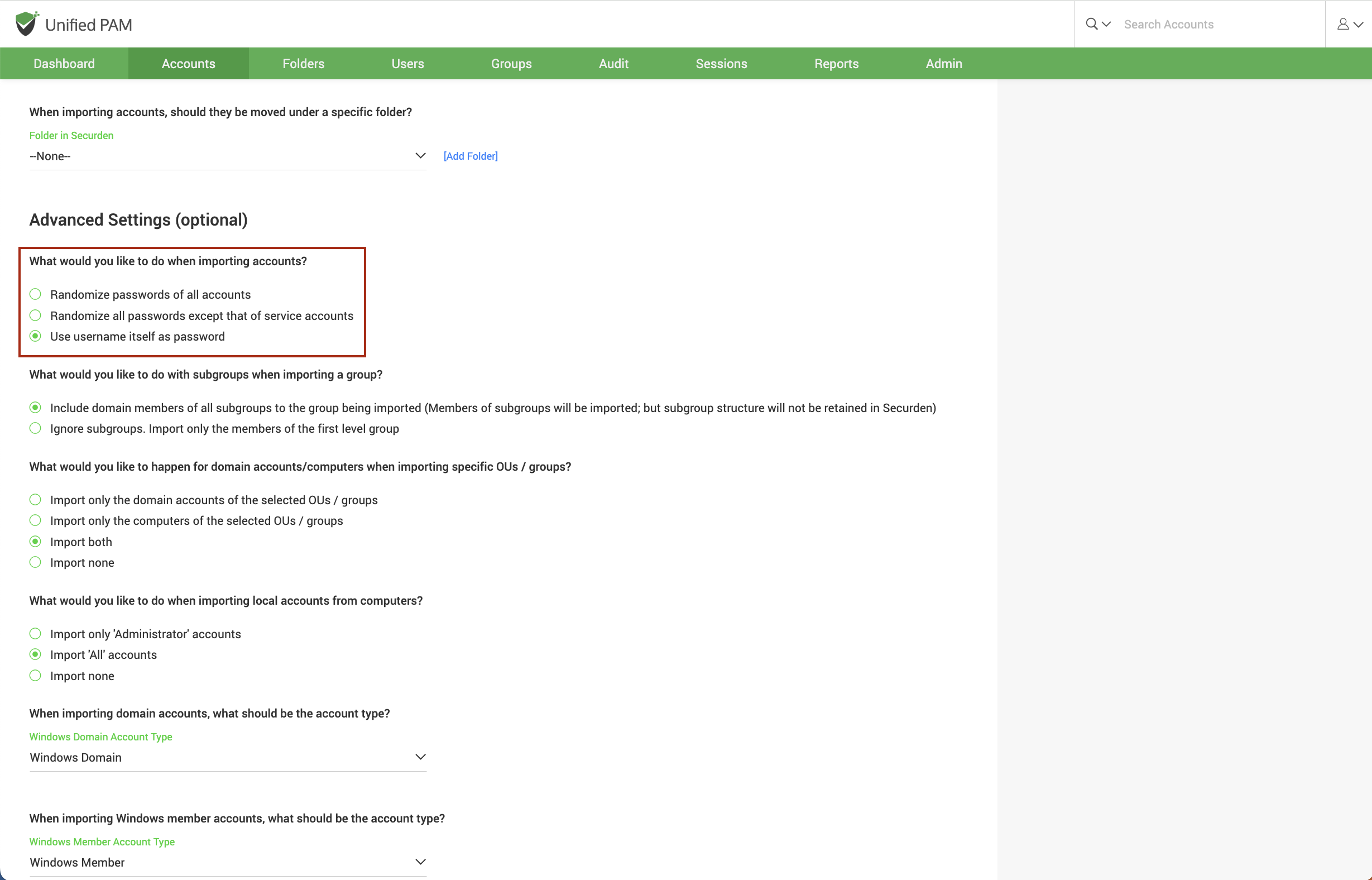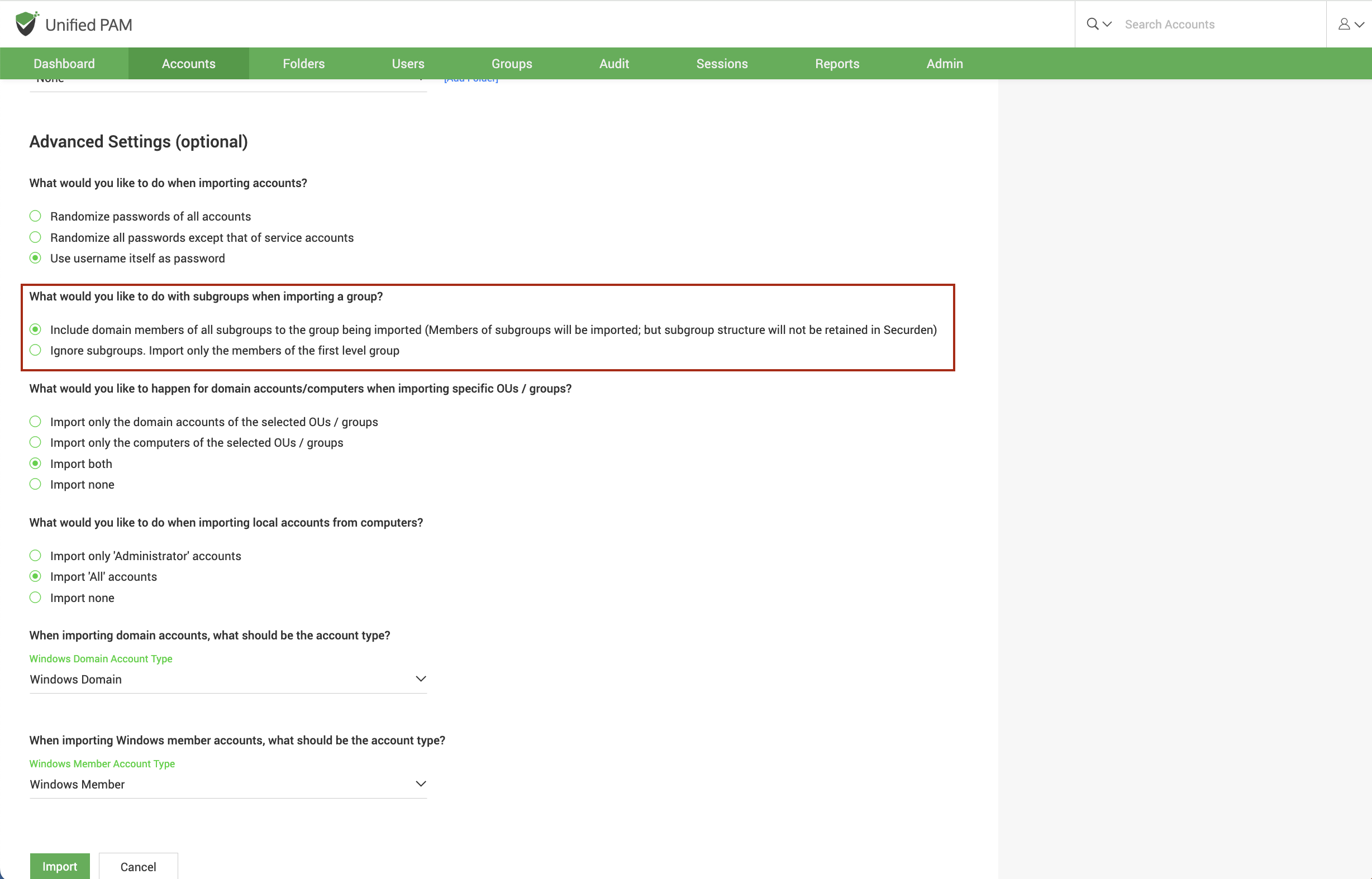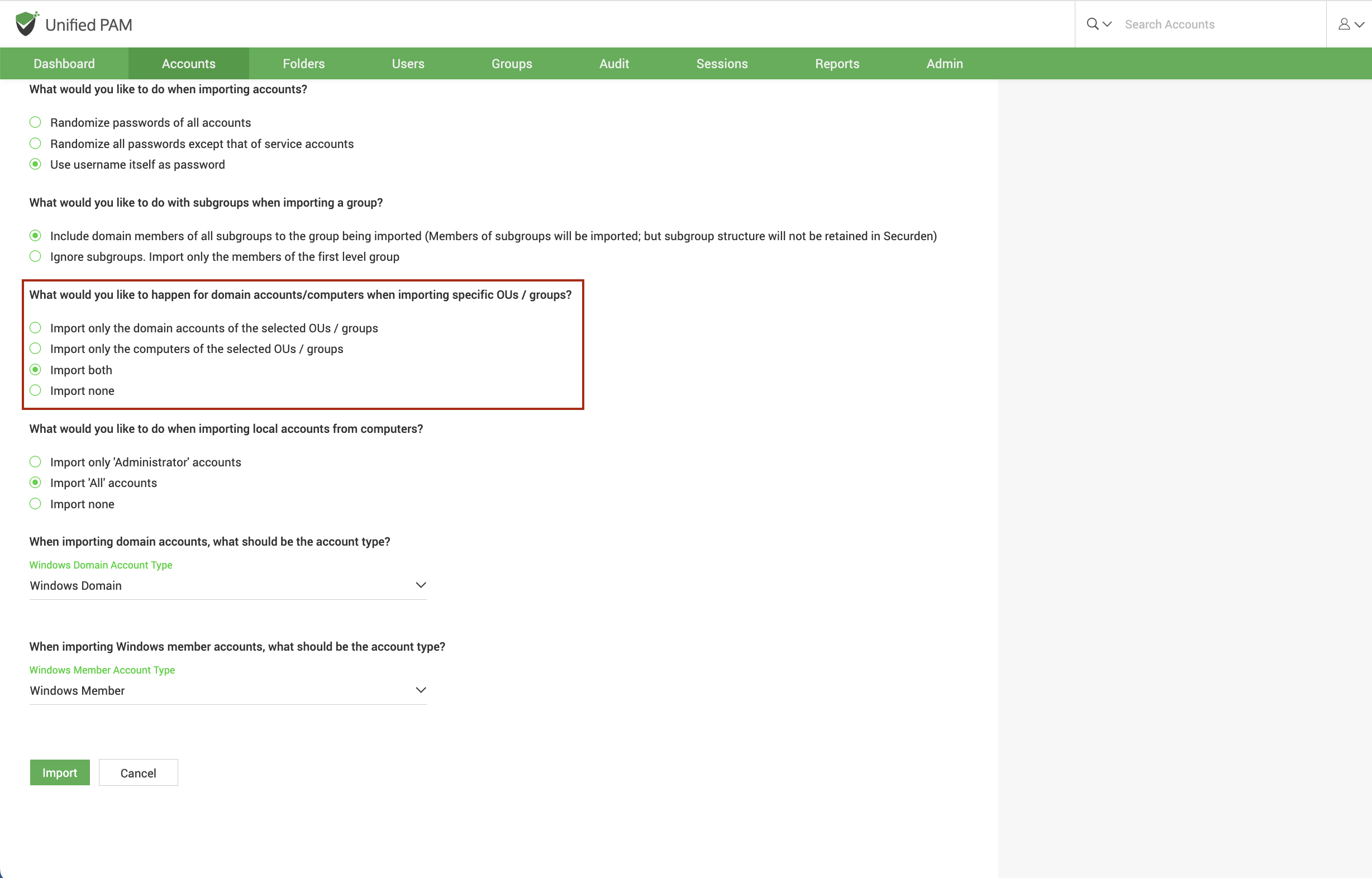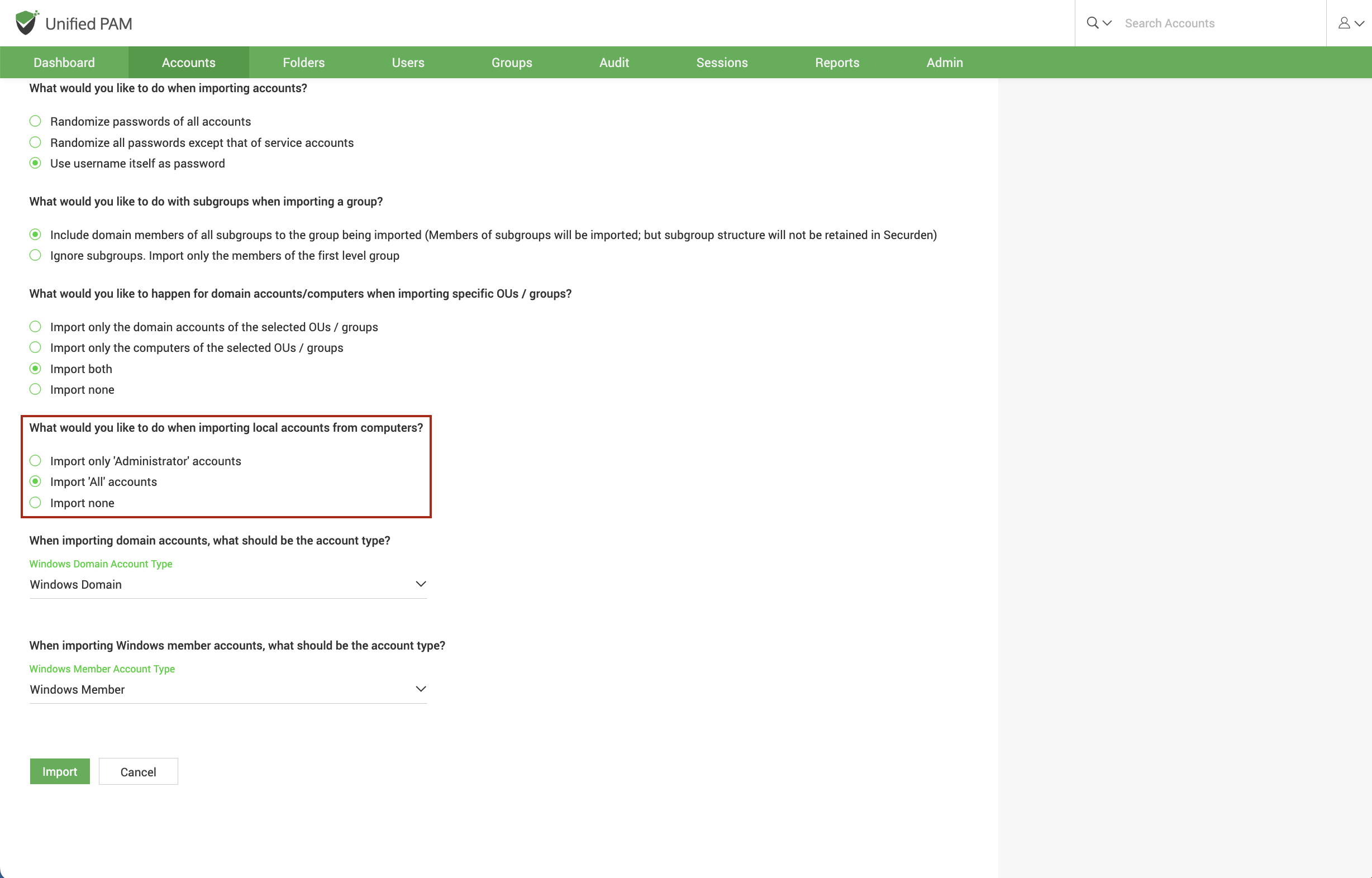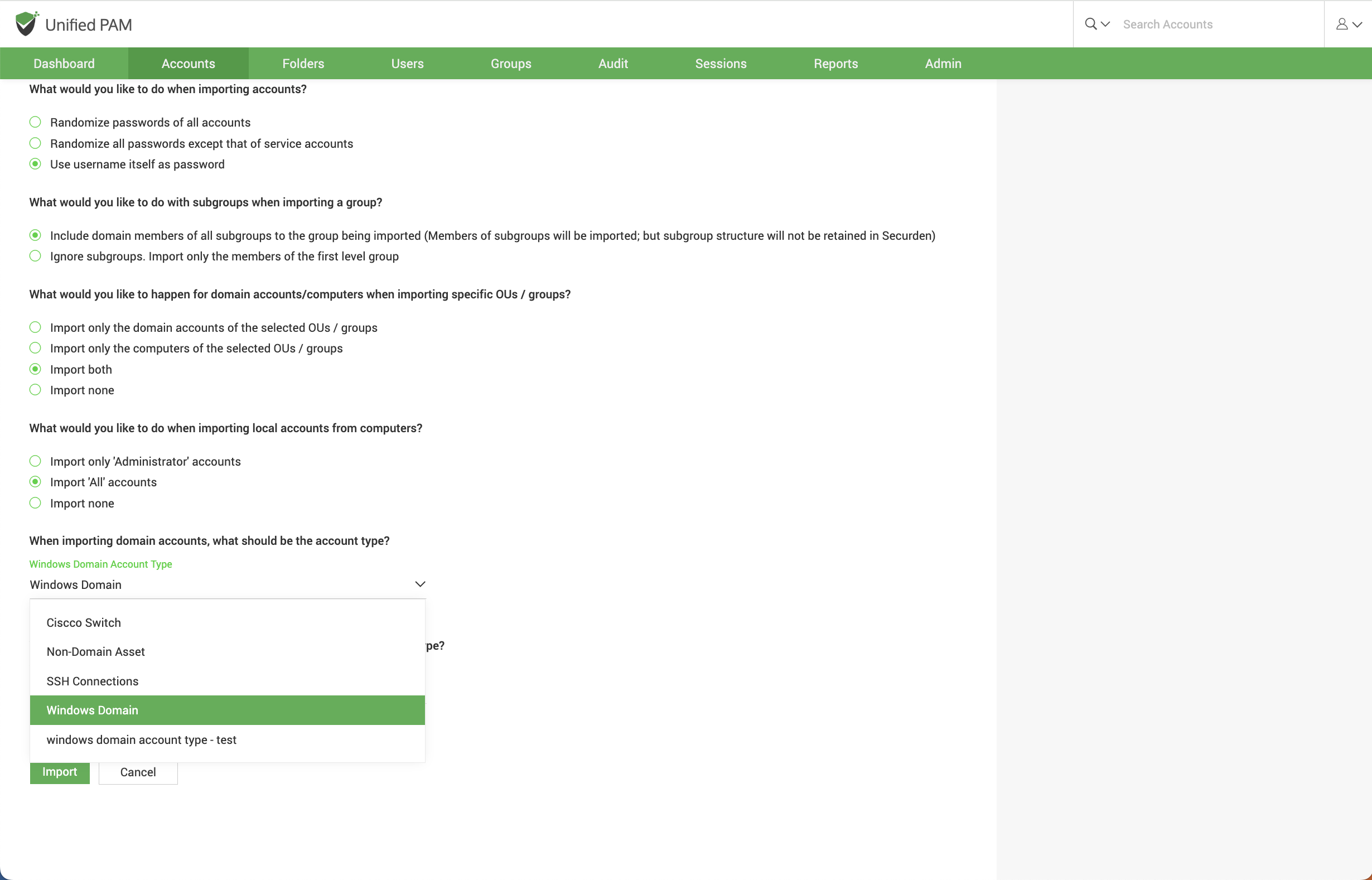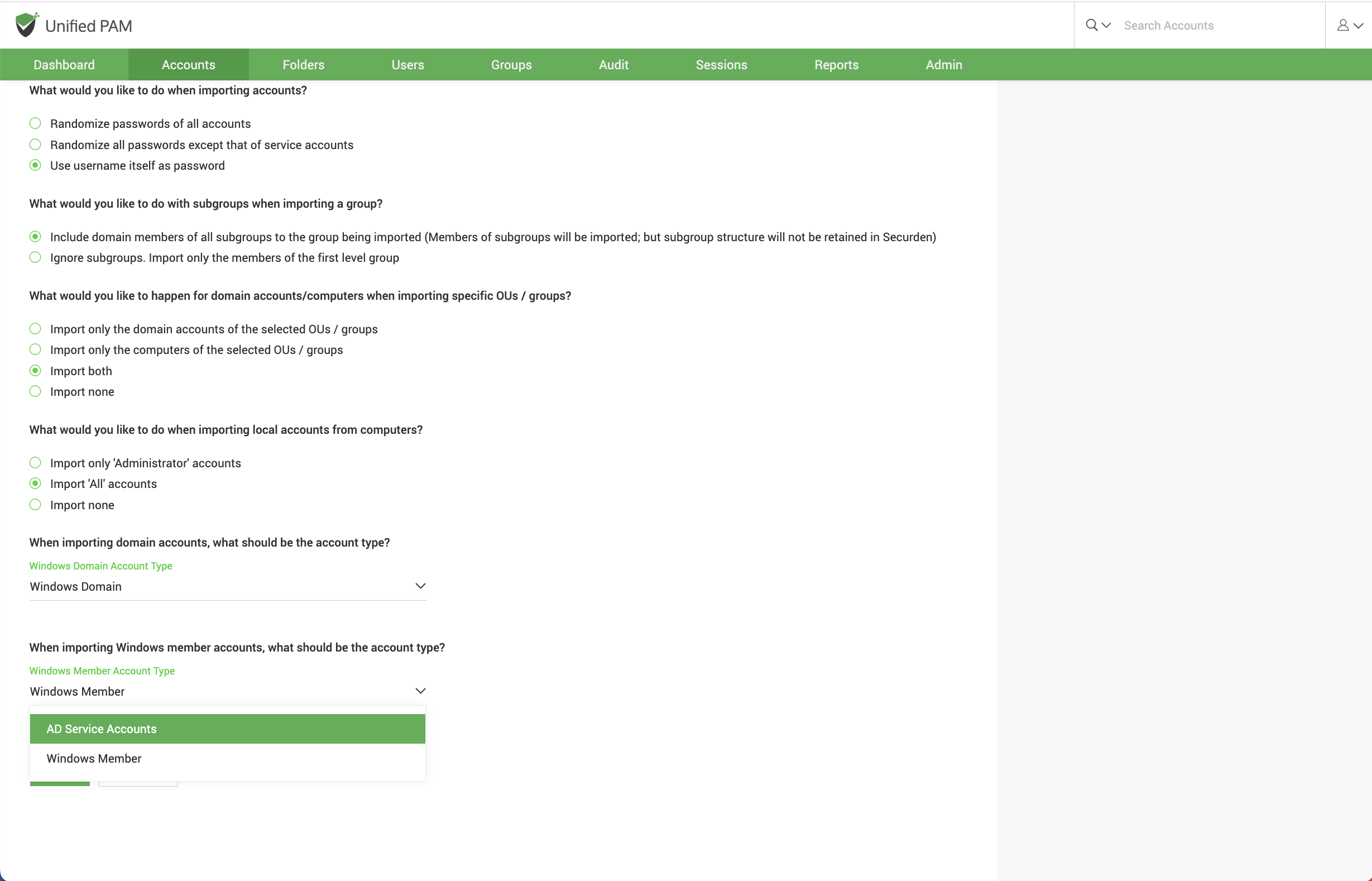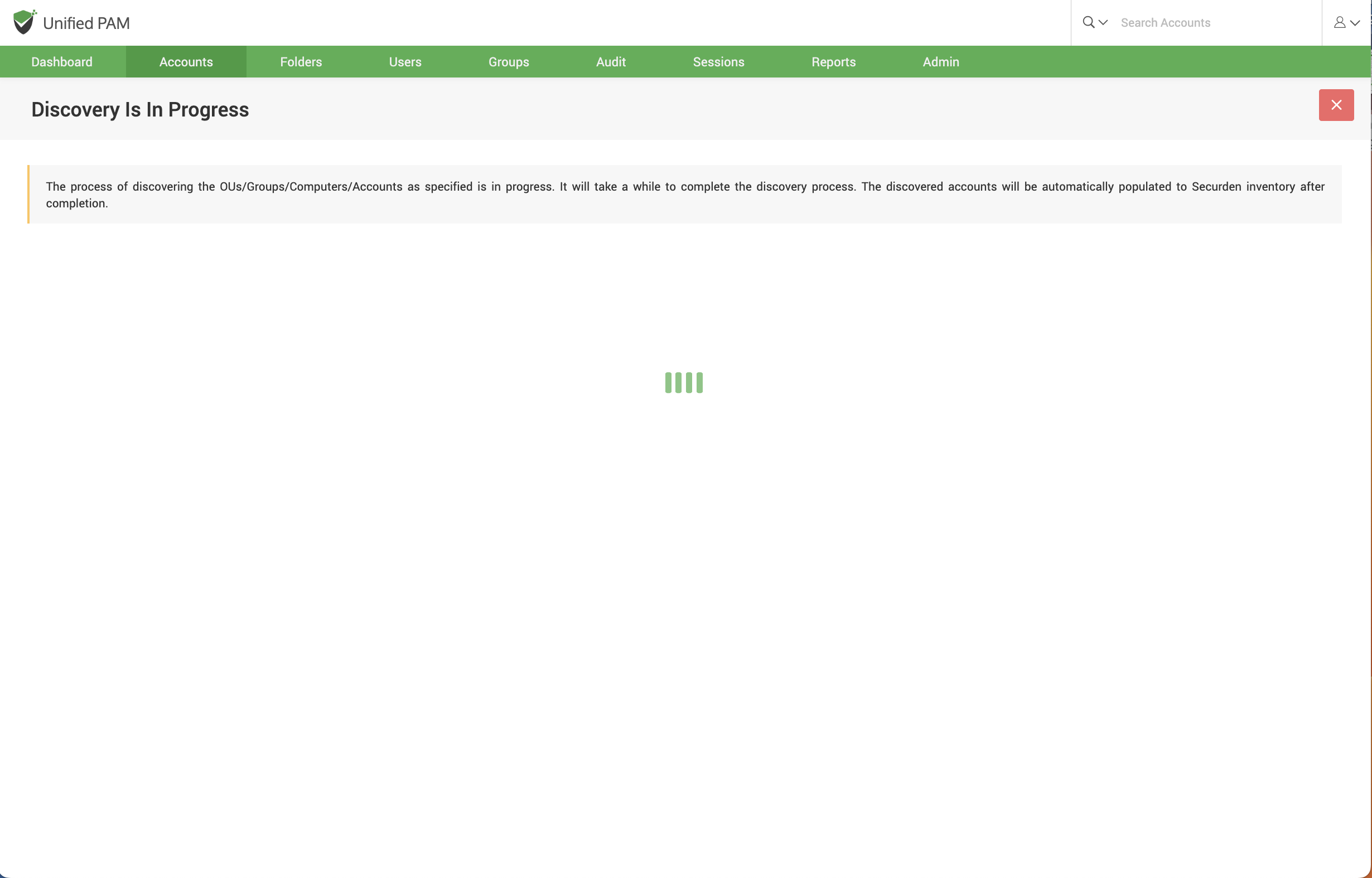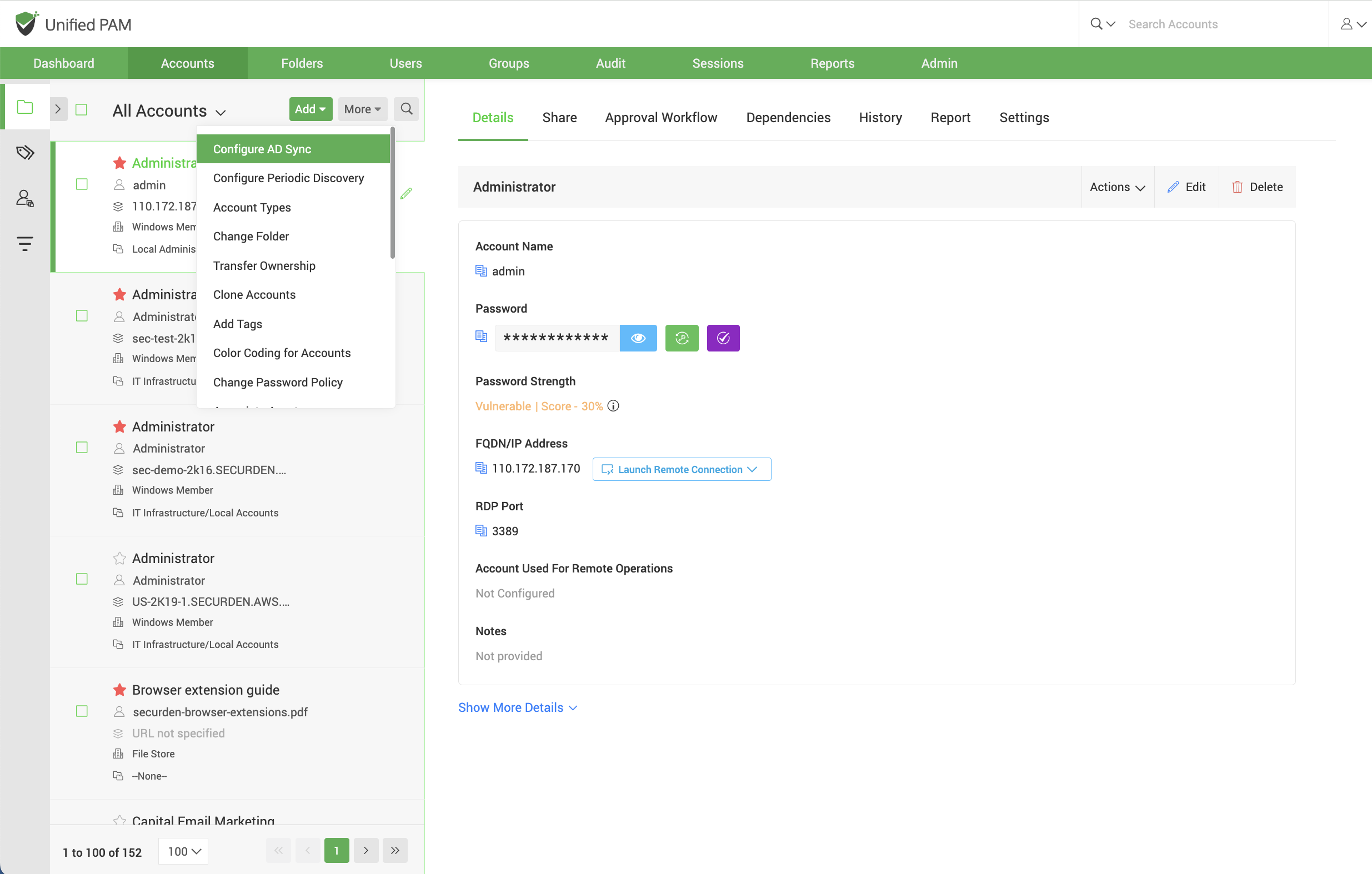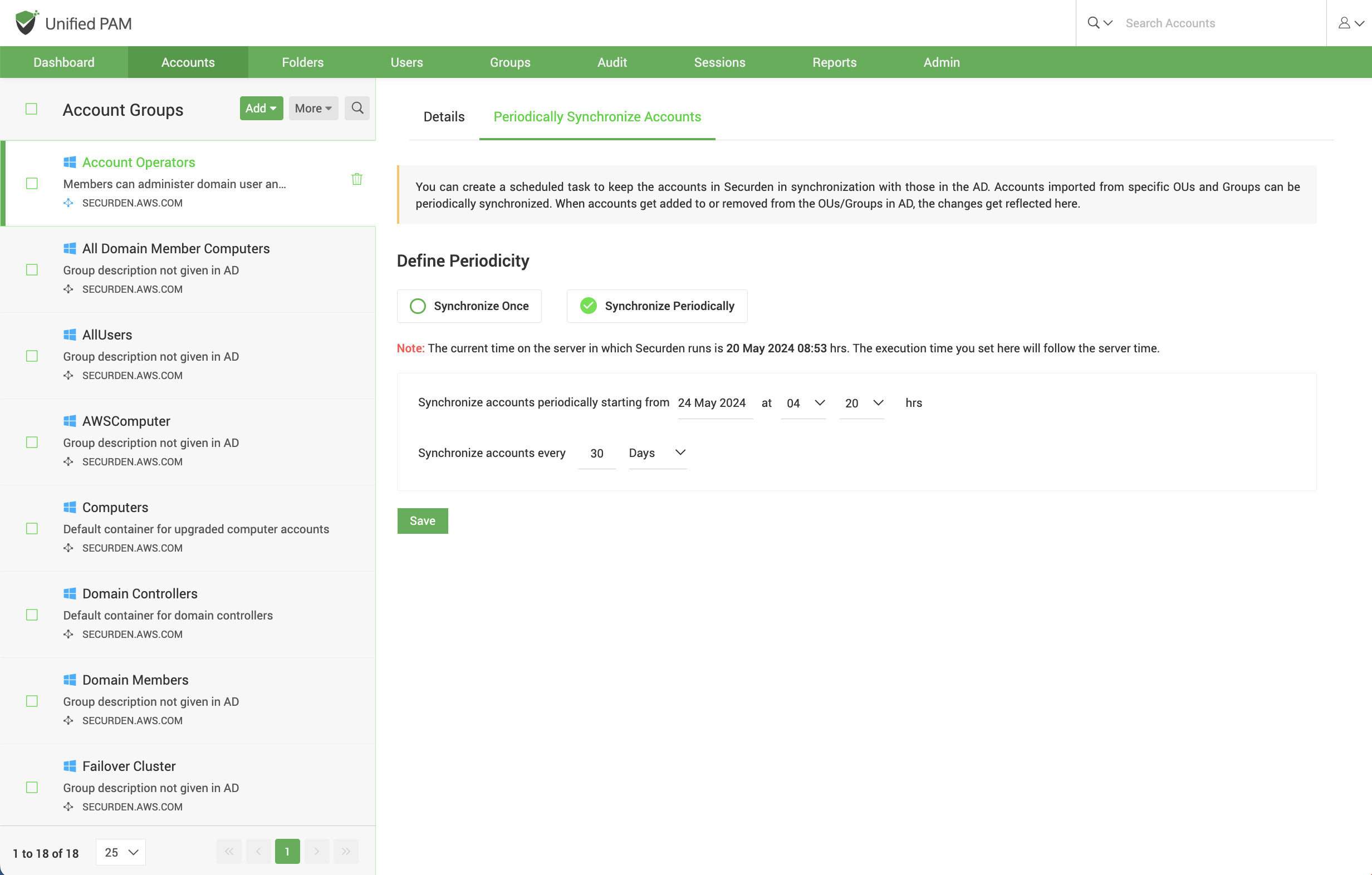Advanced Settings¶
Advanced settings provide multiple granular options to refine the objects imported into Securden. Some of the common cases are discussed elaborately below.
Case Scenarios¶
What would you like to do when importing accounts?¶
When importing accounts, you have the option to generate and assign passwords to accounts after they are added to Securden.
You can choose to:
1. Randomize passwords of all accounts. If you choose this option, passwords of all accounts will be randomized upon importing. The passwords assigned will be compliant with the default password policy in place at that time.
2. Randomize passwords for all accounts except service accounts. If you choose this option, passwords of all accounts except service accounts will be randomized upon importing. The passwords assigned will be compliant with the default password policy in place at that time.
3. Use username as password. If you choose this option, the username of the imported domain accounts will be used as the password for the account in Securden.
What would you like to do with subgroups when importing a group?¶
By default, when importing groups and OUs, Securden automatically discovers and imports all subgroups and their member accounts.
You can choose to:
1. Include domain members of all subgroups to the group being imported. If you choose this option, the domain accounts of all subgroups of the selected group will be imported but the domain accounts will become the member of the parent group.
2. Ignore subgroups. Import only the members of the first group. If you choose this option, only the members of the first level group will be imported. All the member accounts of the subgroups will be ignored.
What would you like to happen to domain accounts/computers when importing specific OUs/groups?¶
By default, Securden discovers and imports all domain accounts and computers when importing an OU or a Group.
You can choose to
1. Import only the domain accounts of the selected OUs/Groups If you choose this option, only domain accounts present in the selected OUs and Groups will be imported. The computers present in the OUs/Groups will not be imported.
2. Import only the computers of the selected OUs/Groups If you choose this option, only the computers present in the selected OUs/Groups will be imported. The domain accounts present in the OUs/Groups will not be imported.
3. Import both If you choose this option, both the computers and the domain accounts present in the selected OUs/Groups will be imported.
4. Import None If you choose this option, neither the computers nor the domain accounts present in the selected OUs/Groups will be imported.
What would you like to do when importing local accounts from computers?¶
By default, when importing computers, Securden automatically discovers all local accounts on each computer and imports them for management.
You can choose to
1. Import only Administrator Accounts If you choose this option, only the local administrator accounts present on computers will be imported. The standard user accounts will be ignored.
2. Import All Accounts If you choose this option, all local administrator accounts and standard accounts will be imported.
3. Import None If you choose this option, only the computers will be imported. The local accounts will be ignored.
When importing domain accounts, what should be the account type?¶
You can select the Account type for the domain accounts imported from the AD domain. By default, it is set to Windows Domain.
If you want to assign a different account type, select one from the dropdown menu.
When importing Windows member accounts, what should be the account type?¶
You can select the Account type for the member accounts imported from the AD domain. By default, it is set to Windows Member.
If you want to assign a different account type, select one from the dropdown menu.
Important
If the selected account type doesn’t have the appropriate attributes, then when importing, data loss is expected. Please ensure the selected account type has all the attributes required to avoid data loss.
Once the options are chosen, click Import. The discovery process will commence.
The discovery process typically takes some time. Once the process is over, a summary report of the process will be displayed.
Details such as the number of accounts and computers imported, and accounts synchronized are displayed.
Configure Periodic Synchronization of Accounts, Endpoints, and Servers¶
You can create a scheduled task to keep the accounts in Securden in synchronization with those in the AD. Accounts imported from specific OUs and Groups can be periodically synchronized. When accounts get added to or removed from the OUs/Groups in AD, the changes get reflected here.
Navigate to Accounts >> More Actions >> Configure AD Sync section to perform this step.
In the window that opens, select Synchronize Once or Synchronize Periodically.
If you choose to synchronize once, you need to specify the time and date for scheduling the activity.
If you choose to synchronize periodically, you need to specify the time and date for the first synchronization and the frequency of subsequent synchronizations.
